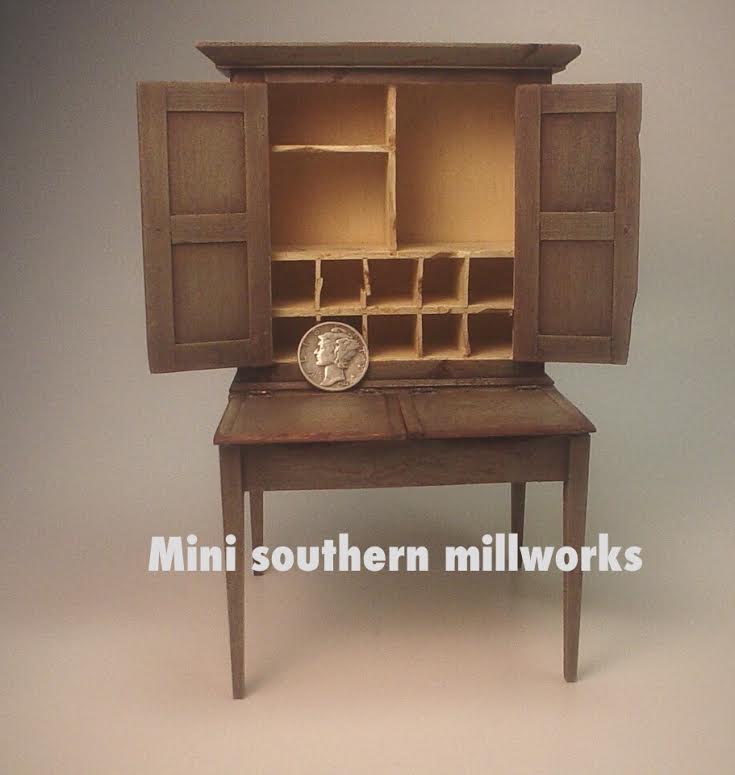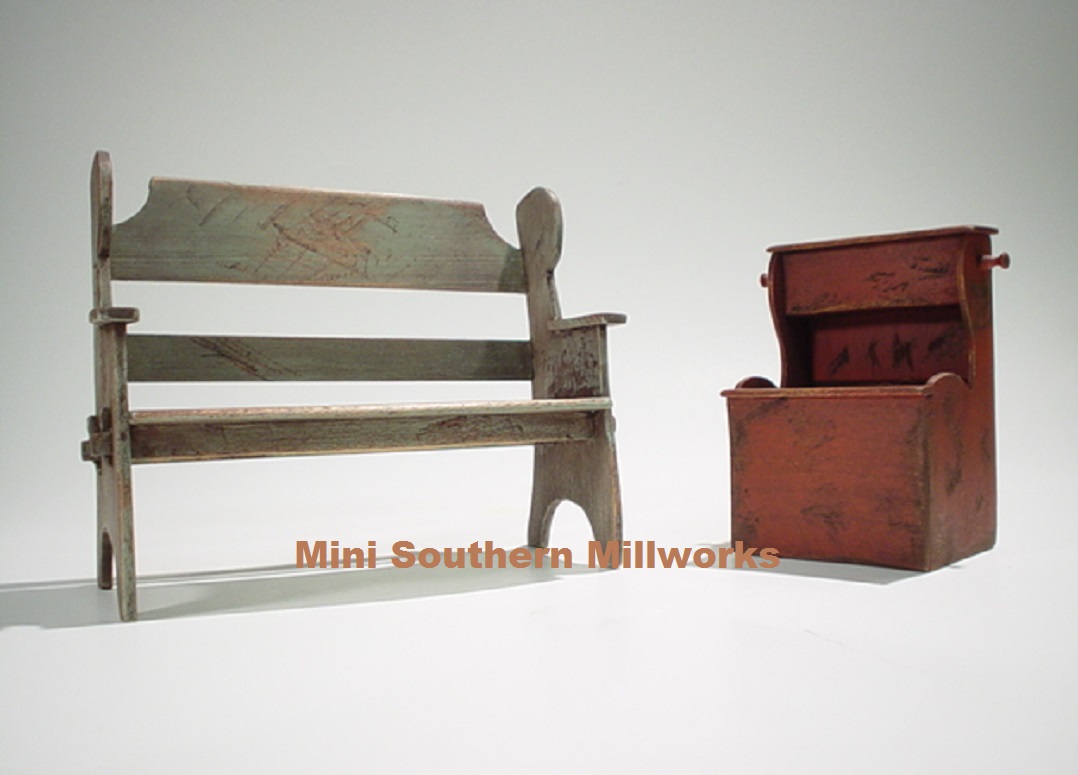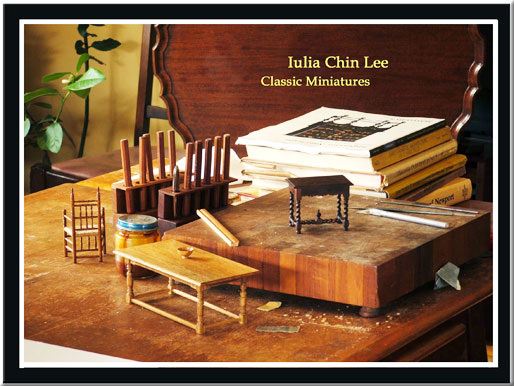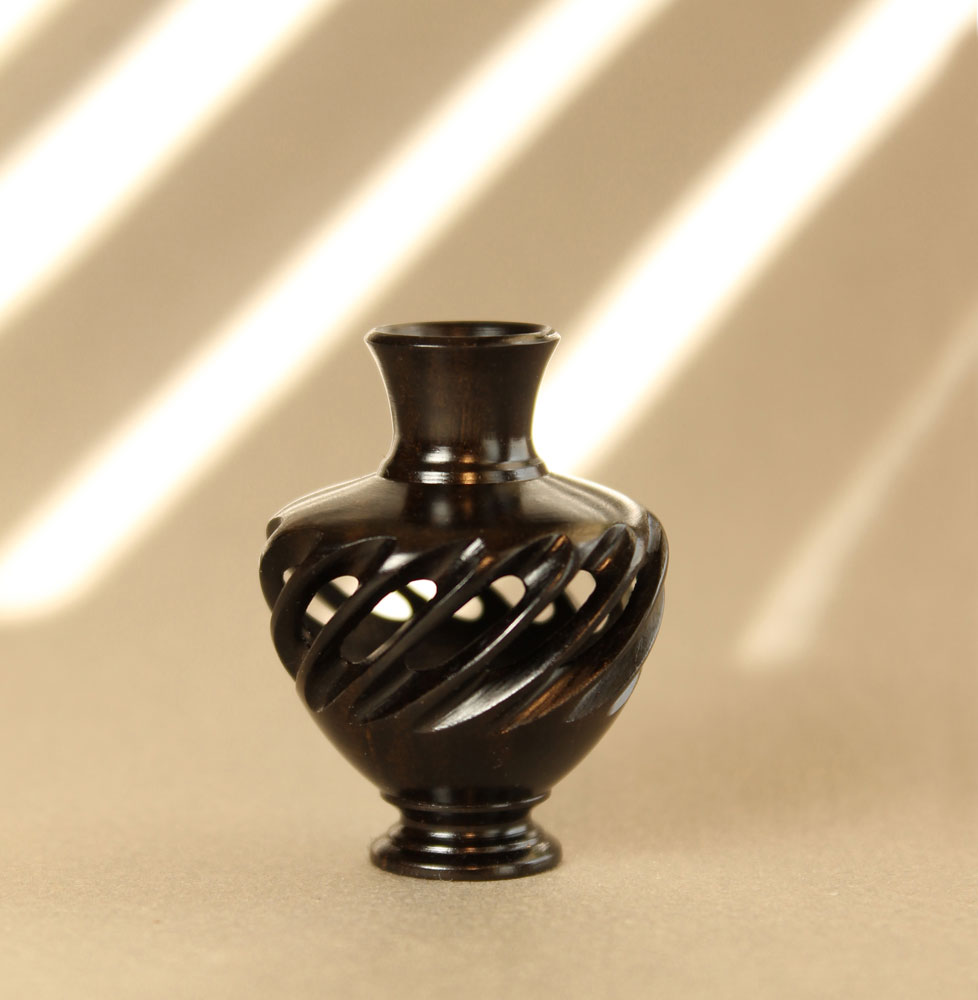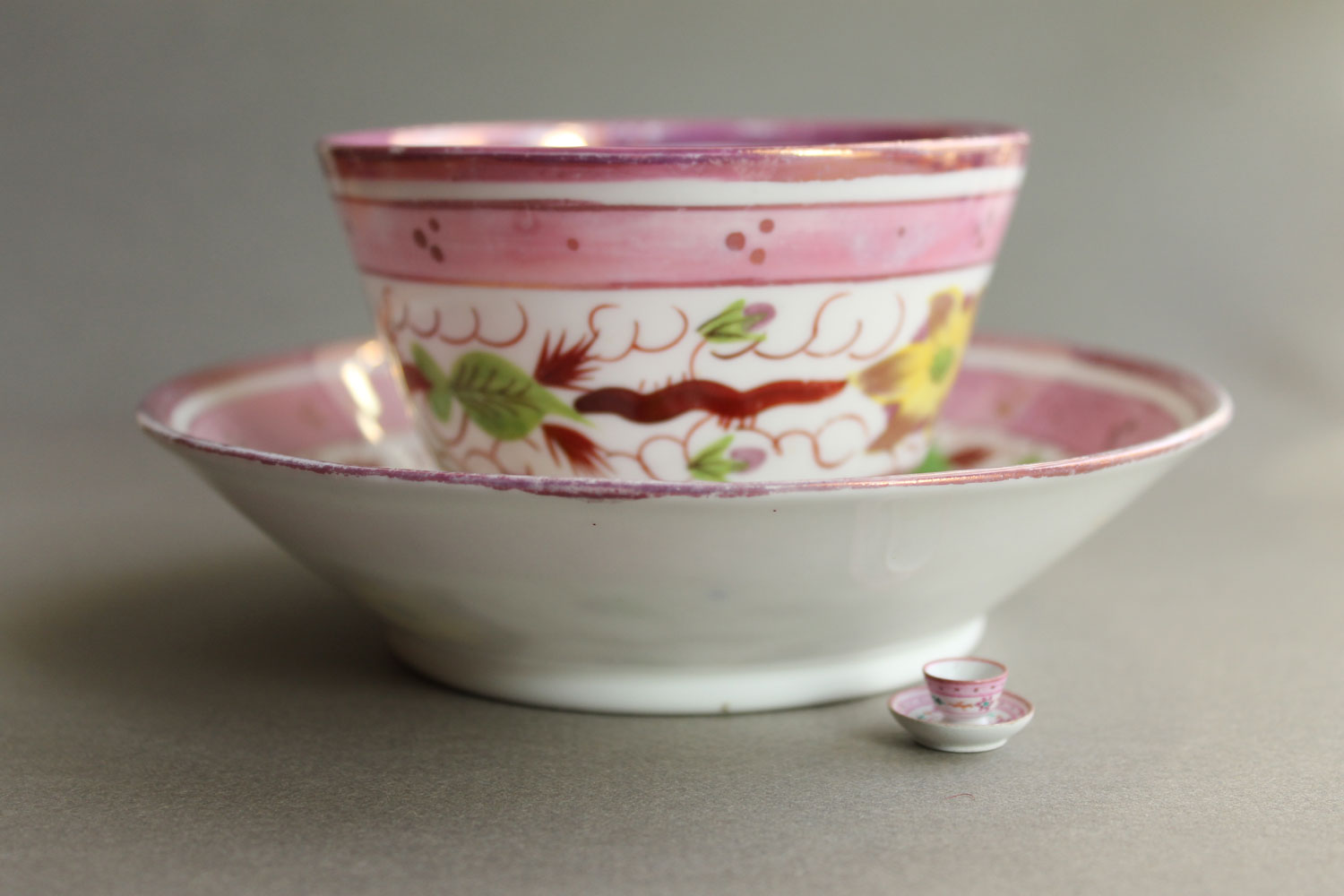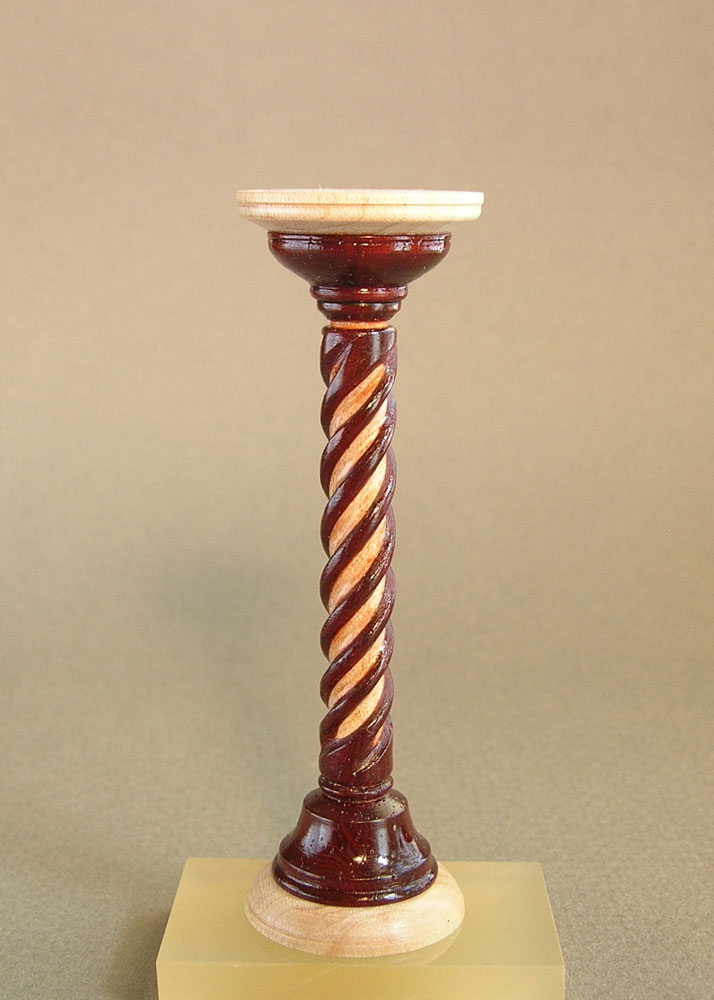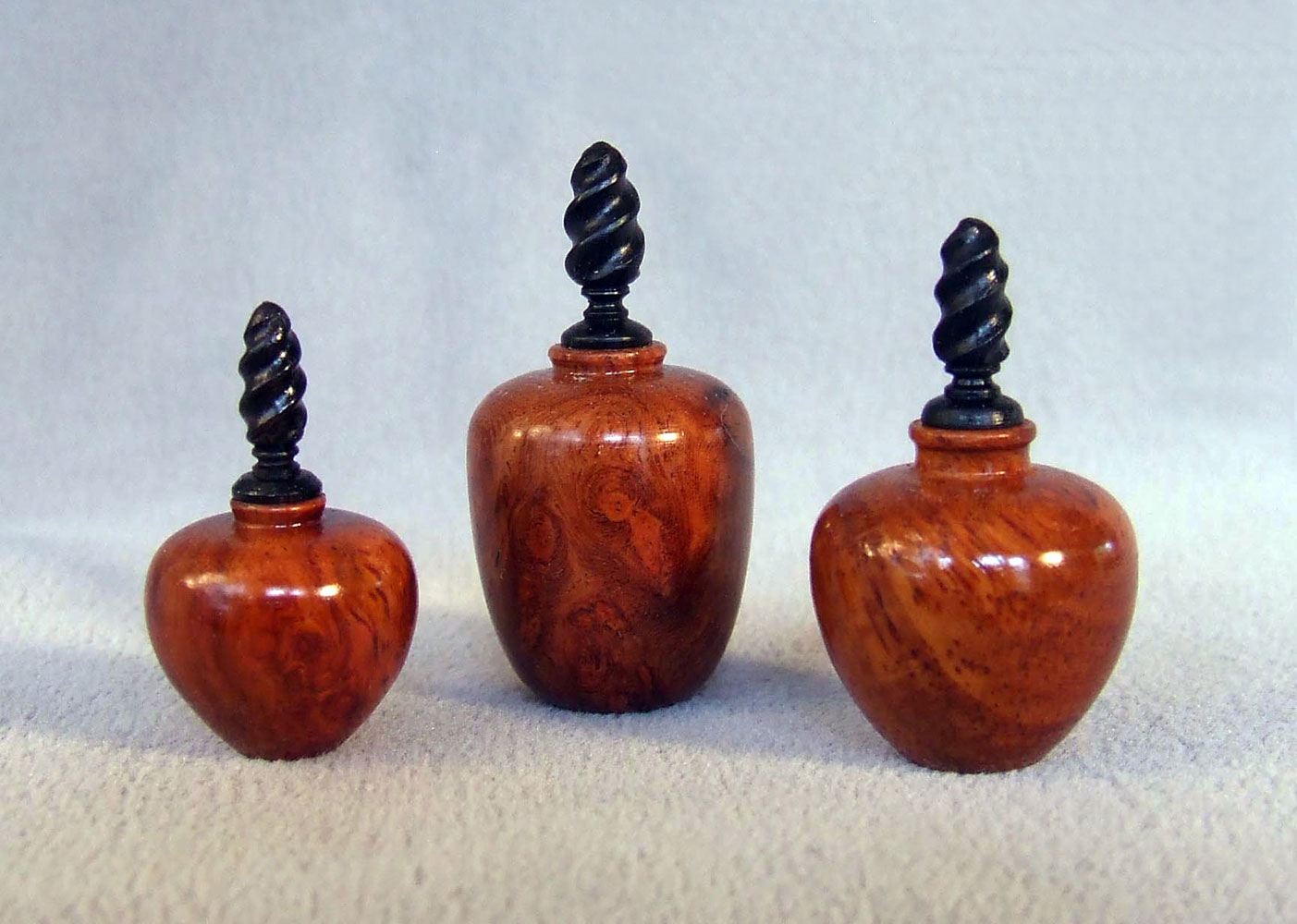Mini Southern Millworks
| Blog | Instagram | Facebook |
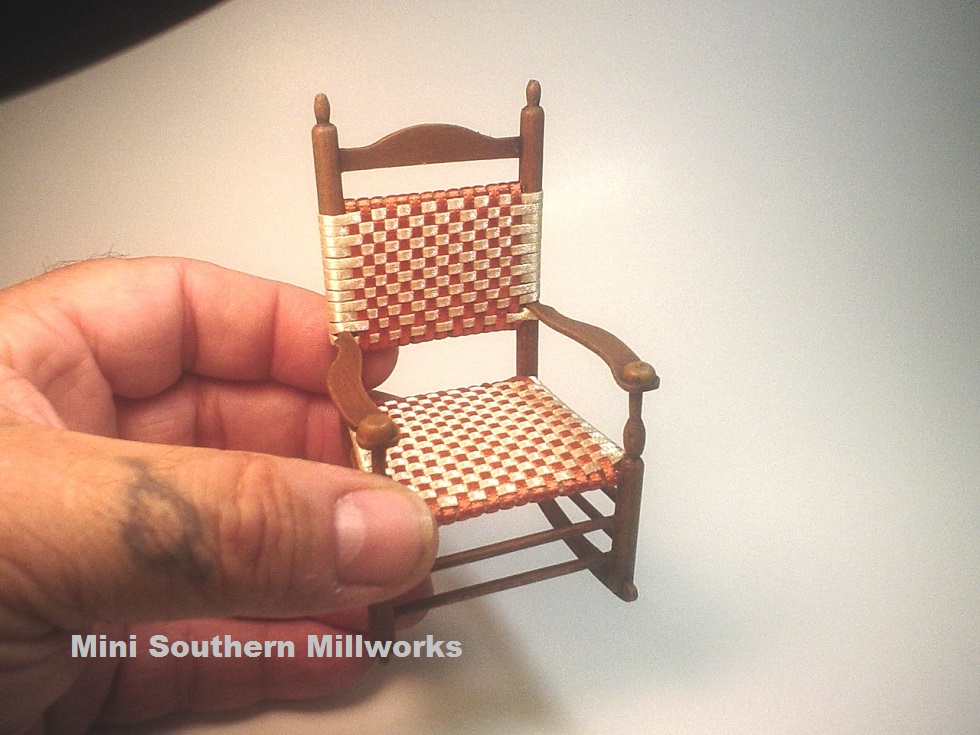 How did you first get started in miniatures?
How did you first get started in miniatures?
After a motorcycle accident in 1982, I was unable to work for several months and I needed something to do to pass the time. I always liked putting together the plastic model kits of cars, airplanes, and more. One day, I ran across an article in a magazine for The House of Miniatures kit of the month club. I love woodworking and antiques so I knew this would be something I would like doing. Also, I would be able to have the “antiques” (in miniature) that I couldn’t afford in real life.
After doing the kits for a little while, I realized that I could scratch build scaled-down, full-sized pieces with even more detail put into them.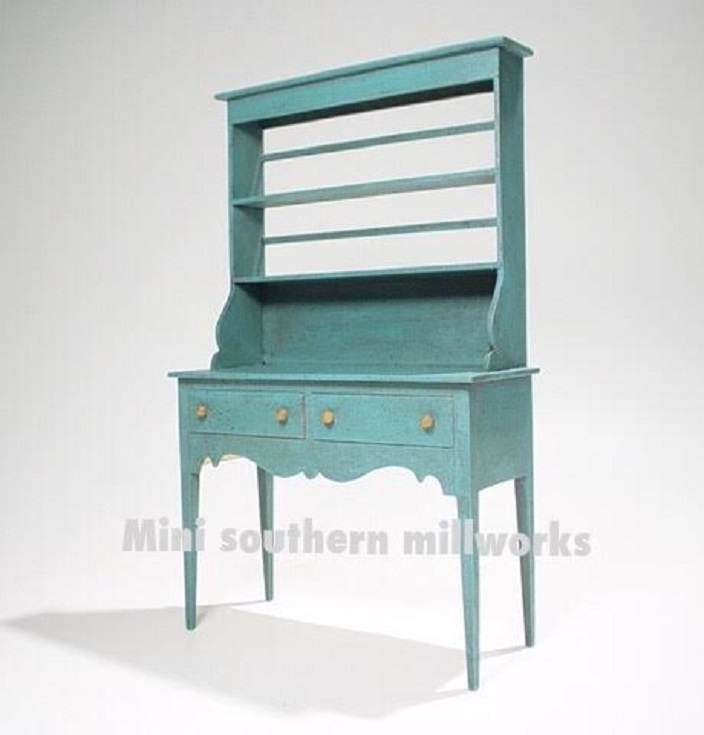
Why the interest in millworks?
Millworks, in my case, is simply taking raw material and transforming it into a functioning, working model of a full sized piece down to the actual joinery of the original piece.
What are some of your favorite miniatures to make?
I really enjoy the country painted pieces that I can distress and antique to make them look and feel as though they are a hundred years old and ripe with history.
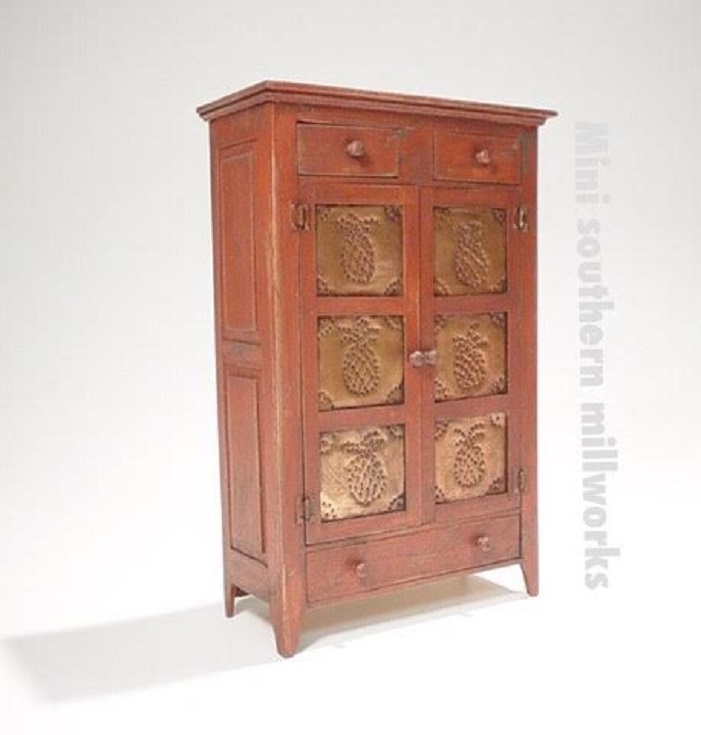 What miniatures have proven to be the most challenging?
What miniatures have proven to be the most challenging?
One of my most challenging pieces was a commissioned piece of a Chippendale bookcase on desk. It was a combination of several different furniture designs with a modern twist. It had claw and ball feet, a broken pediment top, flame urn finials, seven secret compartments, wood trimmed glass shelves, and lights in the bonnet. This piece was done before email and Internet, so my client and I collaborated over the phone to come up with the piece he wanted.
Advice for beginner artists?
Choose something that you really like and learn as much as you can about it. Make this your area of expertise. But remember to always try new and different things or it will become mundane.
The details in other artists’ handmade miniatures as well as the craftsmanship of original antiques.
What is the most memorable miniature you have ever seen by another artist?
I have to say the most memorable miniature would be a 1/6 scale running Harley Davidson engine made by Jerry Kieffer.
Why miniatures?
I have always liked tiny things but the main appeal is the problem solving that goes into doing each piece. Working out how to build the different styles of furniture and doing the original joinery in 1/12 scale is always challenging.
I want to create even more detailed pieces. I have hundreds of photos and plans of different types of furniture just waiting to be done in miniature. I would also like to start making my own period hardware for my pieces and mill my own lumber.
Mini Southern Millworks is headed up by Mario Messina from Louisiana. You can follow along on Instagram, Facebook, or visit the Mini Southern Millworks blog.
